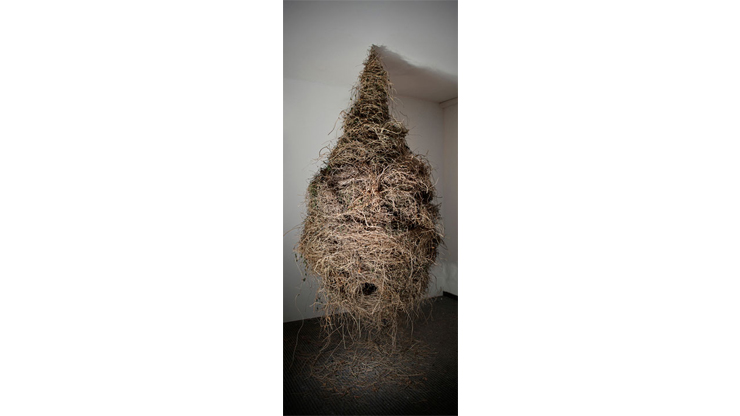Alice Fleisher | Cabinets of Wonder in Contemporary Art
Curators: Dalia Levin, Daria Kaufmann and Ghila Limon
Sep. 8, 2012 - Dec. 29, 2012
Born in Israel, 1986
Nest, 2010, sculpture, branches, metal wire, metal netting
Where the Salt Lies in Bodies, She, 2010, video, 16:34 min.
camera: Hillel Aharoni
editing: Nimrod Tamasi
This exhibition features two works by Alice Fleisher. Fleisher’s sculpture and video work both bespeak a longing to return to a primeval, natural world. The rise of civilization, according to various philosophers, inevitably involves both a process of detachment from nature and an attempt to control it. Fleisher’s works decry the results of the civilizing process that every person is subjected to from birth, and which shapes the personality of adult members of society.
